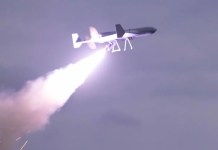The Indian Air Force is all set to be a part of the Exercise Pitch Black scheduled in Australia. Australia’s Defence Minister Christopher Pyne while speaking at New Delhi’s National Defence College confirmed that the Indian Air Force will be participating in what is believed to be the largest training exercise for the Air Force in the southern hemisphere.
The exercise is hosted by the RAAF, more commonly known as the Royal Australian Air Force. At the event, Pyne also spoke of the strategic engagements between India and Australia which includes the AUSINDEX from 2015. He added that the AUSINDEX will be repeated every two years. The Exercise Pitch Black has been scheduled to take place in the coming July and August.
Exercise Pitch Black Was First Started in 1981
The Exercise Pitch Black which was first started in the year 1981 for different RAAF units, takes place every two years in the Australian continent. The last exercise in 2016, was attended by France, Indonesia, New Zealand, Thailand, Canada, Germany, Netherlands, Singapore, and the United States. Singapore was the first nation to be included in the exercise in the year 1990 following with the Australian administration opened the exercise to other countries too.
Also Read: India All Set to Integrate Su-30MKI with BrahMos Missiles
Exercise Pitch Black & OCA, DCA Combat
Through the exercise the countries aim to practice OCA and DCA, more commonly known as the offensive and defensive counter air combat. The exercise takes place in New South Wales’ Glenbrook region, at the Australian Air Force base in a simulated environment.
The Indian Air Force was last year in October, a part of the first ever joint tri-services exercise along with Russia. The military drill was attended by 350 Indian Army Officers, 80 Air Force officers including 2 IL 76 aircraft, and 1 corvette and frigate. The aim of the exercise was to strengthen the interoperability.
Other News:
- Why is the US Purchasing Russian Fighter Aircrafts like Mig-29 & SU-27?
- US fighters accompany Russian TU-22M3 over the Baltic




